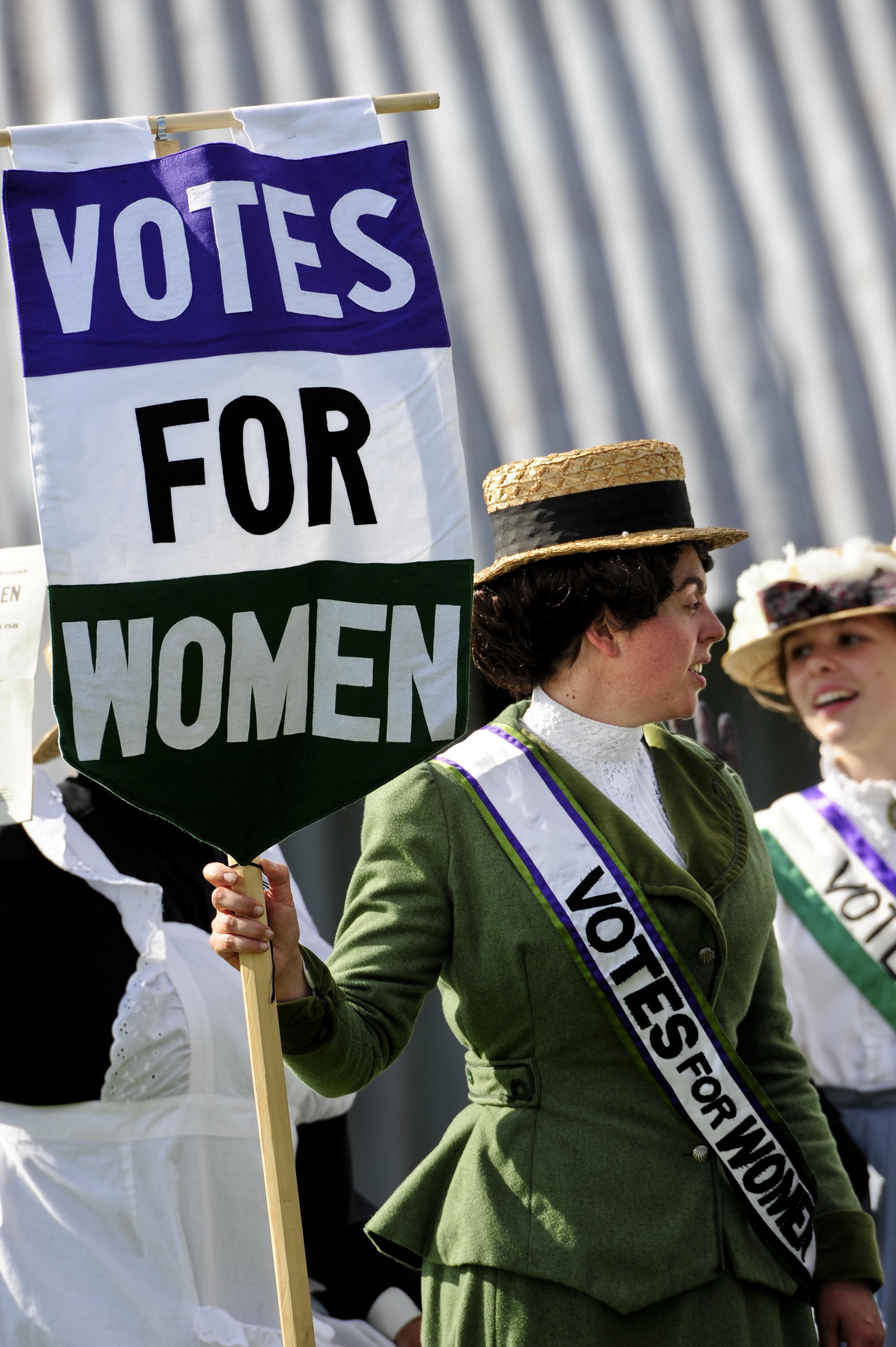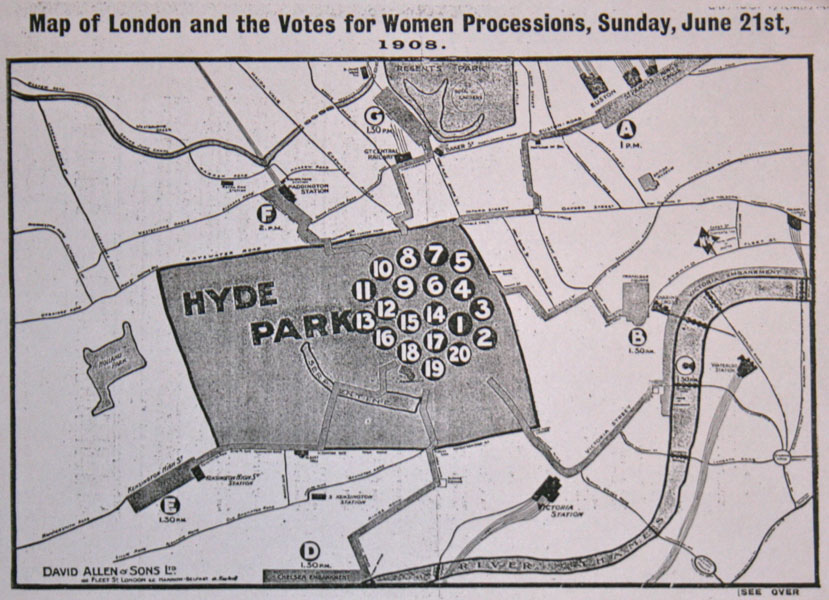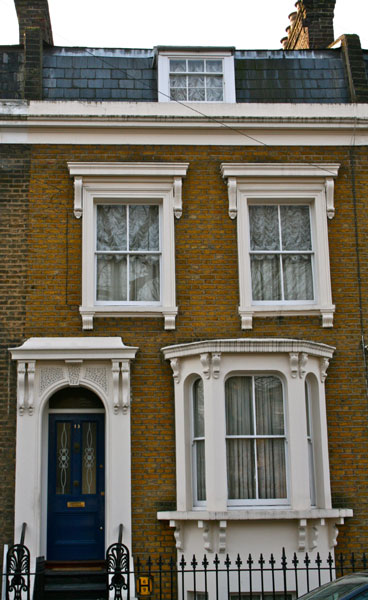New Markets
Marketing strategies were a feature of the Women's Social and Political Union's (WSPU) genius. The idea of the Union Colours - purple for valour, white for purity and green for youth, was launched in time for a mass demonstration in central London on 21 June 1908, 'Women's Sunday'.
All women were urged to wear at least one item in the 'Colours', a ribbon for hat or waistband, a scarf, belt, buckle, or badge, available to buy from WSPU offices to advertise and identify the cause.
In London's Hyde Park 80 women speakers on 20 platforms urged 'Votes for Women'. 'The Times' estimated the crowd at half a million.
Perhaps the turnout and the sale of thousands of scarves that day, prompted department stores to produce and sell jewellery and clothing in 'the Colours', such as blouses bearing 'Votes for Women' displayed in their windows.
In pursuit of the female customer Dickins and Jones, Regent Street, London W1, Peter Robinson, Oxford Circus, London W1, Whiteley's of Ladbroke Grove, London W2, Frederick Gorringe, Buckingham Palace Road, London SW1, Burberry's, Haymarket, London SW1 and other leading stores took lavish advertisements in the pages of the suffragettes' paper, 'Votes for Women.
Ironically, this money must have helped finance the WSPU's own new chain of shops.
If businesses thought this might protect them from attack they were mistaken. Smashing the massive department store windows became a symbolic act, as Emmeline Pankhurst (1858-1928) declared in February 1912, "The argument of the broken pane is the most valuable argument in modern politics".
In March 1912, Marshall and Snelgrove, Burberry's, Gorringe's, Liberty, Regent Street, London W1 plus Swan and Edgar, 49 Regent Street, London W1 were among the hundreds of premises that suffered the suffragette hammer.
Outraged letters to 'The Times' and cartoons in 'Punch' about 'the manly woman', as they termed the New Woman, gradually fuelled a backlash.
Lady Harberton (1843/44-1911) was a founder of the Rational Dress Society, an organisation trying to free Victorian women from unhealthy, restricting clothing such as the corset.
In 1898, Lady Harberton was refused entry to the Hautboy Hotel, Woking for lunch because of her cycling outfit which consisted of a shortened divided skirt.
More serious, in the following century, was the means used to control political activity in public places. After a suffragette, Helen Ogston, used a dog-whip to defend herself from assault at the Albert Hall in 1908, Lloyd George banned women from all his public meetings by introducing the Public Meetings Bill.
Similarly, the Metropolitan Police refused the WSPU access to Hyde Park, and the Queen's Hall landlords refused the WSPU further rentals. Sylvia Pankhurst's (1882-1960) East London Federation of Suffragettes was barred from Bromley Public Hall, Bow Road, London E3 in 1913.
They protested by marching to 13 Tomlins Grove, London E3, the house of a Conservative councillor who voted for the ban. As a suffragette started her speech, mounted police charged the crowd injuring women and children.
The following year, the First World War would provide the rallying point for women demanding to be allowed to help the war effort.
By taking over the jobs of those men who went to fight, women's lives were transformed - as the 'The War-Worker' of December 1918 described. 'To-day she may smoke, she may wear trousers, she may crop her hair short, she may live alone in flats, she may walk the streets…No one stares at her or interferes with her or thinks any the worse of her.'
Visible in Stone - New markets
Please click on the gallery images to enlarge.







